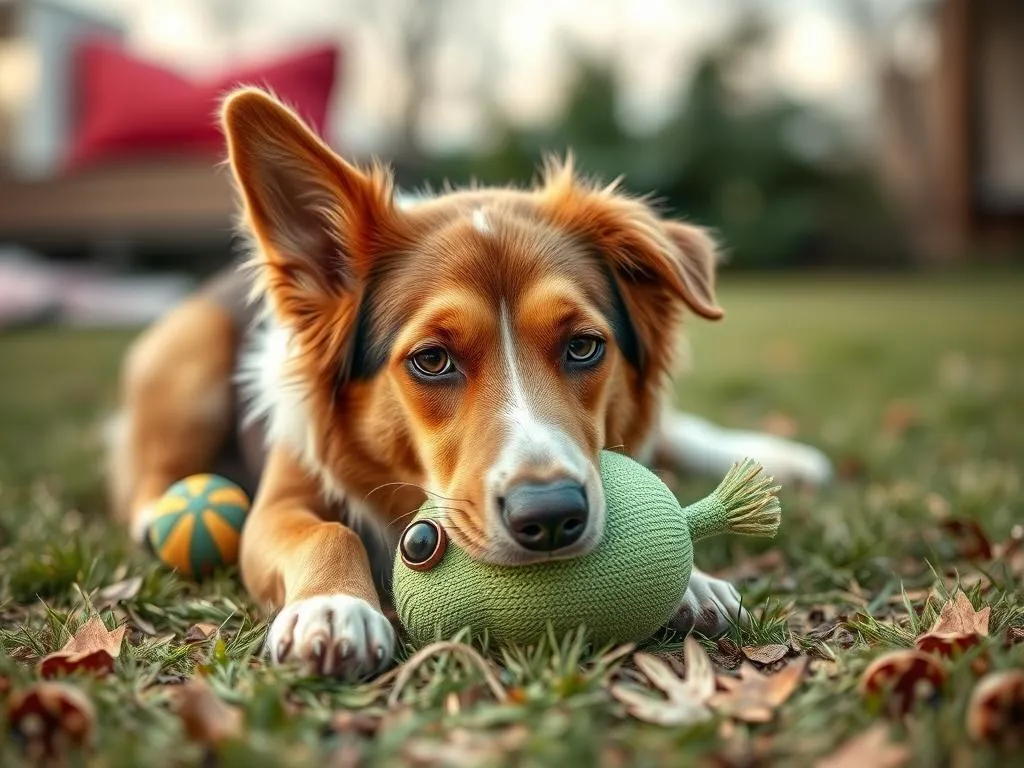
The bond between dogs and humans is one of the richest relationships we can experience, often defined by love, loyalty, and playfulness. One behavior that many dog owners notice is their furry friends bringing them toys. This seemingly simple action can carry a wealth of meaning, making it essential for pet owners to understand the underlying reasons behind it. In this comprehensive exploration, we will delve into the various aspects of this behavior, shedding light on why dogs bring you toys and how this interaction enhances the human-canine relationship.
Understanding Canine Behavior
The Nature of Dogs
Dogs have been companions to humans for thousands of years. Their history of domestication has shaped not only their physical attributes but also their social behaviors. Unlike their wild ancestors, domesticated dogs exhibit a greater tendency to bond with humans, seeking companionship and approval. This connection is central to their behavior, including the act of bringing toys.
Communication Styles
Dogs communicate in a variety of ways, utilizing body language, vocalizations, and gestures. Understanding these communication styles can enrich our interactions with our furry friends. For example, a wagging tail usually indicates excitement, while a lowered head might suggest submission or anxiety. When dogs bring you toys, they are employing a form of communication, expressing their feelings and desires.
Reasons Why Dogs Bring You Toys
Playfulness
Play is an intrinsic part of a dog’s nature. It’s not just a way for them to expend energy; it’s crucial for their mental and physical health. When dogs bring you toys, they are often inviting you into their world of play. Engaging in play not only benefits dogs by keeping them active but also fosters a deeper connection between you and your pet. This mutual enjoyment of playtime can strengthen your bond significantly.
Seeking Attention
Dogs are inherently attention-seeking creatures. They thrive on interaction, whether it’s cuddling, petting, or playing. By bringing you toys, they may be trying to capture your attention, signaling that they want to engage with you. This action can be particularly pronounced in dogs that have learned that bringing toys leads to positive interactions, such as playtime or affection.
Bonding and Affection
Toys play a pivotal role in strengthening the bond between dogs and their owners. When dogs bring toys to their humans, it’s a gesture of affection. They are sharing something they love with you, which can signify trust and emotional connection. This behavior is an invitation to participate in their joy and reinforces the love they have for you.
Instinctual Behaviors
Many behaviors we observe in dogs are rooted in instinct. The act of bringing toys can be linked to their hunting and retrieval instincts. In the wild, dogs would retrieve prey for their pack. Similarly, when they bring you a toy, they may be exhibiting this instinctual behavior, albeit in a playful context. This connection to their wild ancestors adds a layer of depth to their actions.
Teaching and Learning
Dogs are intelligent animals that thrive on learning and teaching moments. When they bring you toys, it can serve as a form of play and training. Engaging in games like fetch not only entertains but also reinforces positive behaviors and commands. This interaction fosters a learning environment where dogs can grow, learn new tricks, and strengthen their skills.
Different Types of Toys and Their Meanings
Plush Toys
When dogs bring plush toys, it can signify comfort and affection. Plush toys often serve as comfort objects for dogs, acting as a source of solace in times of stress. By bringing you a plush toy, they may be seeking reassurance and companionship.
Chew Toys
Bringing chew toys can indicate a need to engage in healthy chewing behavior. Dogs have a natural instinct to chew, and providing them with appropriate toys helps satisfy this urge. When your dog brings you a chew toy, they might be inviting you to join them in that activity, reinforcing a playful interaction.
Interactive Toys
Interactive toys, which require engagement and problem-solving, can be a sign of your dog’s intelligence and curiosity. When dogs bring you these toys, they are often looking for you to participate in the challenge or game, enhancing your bond through teamwork and shared experiences.
How to Respond When Your Dog Brings You a Toy
Encouraging Play
When your dog brings you a toy, it’s a golden opportunity to engage in playtime. Throw the toy, initiate a game of tug-of-war, or encourage them to fetch. This interaction not only entertains your dog but also strengthens your relationship.
Training Opportunities
Use the moment as a training opportunity. For instance, if your dog brings you a toy, you can teach them commands like “drop it” or “fetch.” This is an excellent way to reinforce obedience while also enjoying play.
Understanding Your Dog’s Needs
Interpreting your dog’s behavior can help meet their emotional and physical needs. If they bring you a toy and seem restless, it might indicate they need more exercise or mental stimulation. Being attuned to these signals will ensure a happier, healthier dog.
Common Myths About Dogs and Their Toys
Dogs Only Bring Toys to Show Off
One common misconception is that dogs bring toys merely to show off or boast. In reality, this behavior is often rooted in a desire for interaction and connection. Dogs are not trying to brag but rather engage and bond with their owners.
Bringing Toys Means They Want to Play All the Time
While it’s true that many dogs love playtime, bringing a toy doesn’t always mean they want to play. Sometimes, it can be a way to seek comfort, attention, or simply share something they enjoy. Understanding the nuances of this behavior is vital for meeting their needs.
Only Certain Breeds Do This
Another myth is that only specific breeds exhibit the behavior of bringing toys. In truth, this behavior is universal among dogs, regardless of breed. Each dog may express it differently, but the underlying instinct to share and engage through toys is present in all canines.
Enhancing Your Dog’s Playtime Experience
Choosing the Right Toys
Selecting the appropriate toys for your dog is crucial for their enjoyment and safety. Consider their size, chewing habits, and play style. A variety of toys can keep them engaged and prevent boredom, allowing for a richer play experience.
Creating a Play Environment
Setting up a safe and enjoyable play environment enhances your dog’s playtime. Ensure that the space is free of hazards and allows for plenty of room to run and explore. A well-designed play area can significantly enrich your dog’s experience.
Engaging in Joint Activities
Participating in interactive games and activities can deepen your bond with your dog. Try playing fetch, hide and seek, or agility training. These activities not only provide mental and physical stimulation but also foster a sense of teamwork and connection.
Conclusion
Understanding why dogs bring you toys can greatly enhance the relationship between you and your furry companion. This behavior encompasses playfulness, a desire for attention, bonding, instinctual actions, and opportunities for training. By recognizing and responding to these signals, you can create a more fulfilling and engaging environment for your dog. Observing and engaging with your dog on a deeper level will ultimately lead to a stronger, more affectionate bond between you and your beloved pet.









